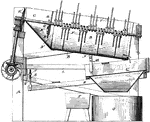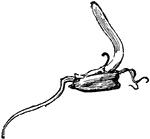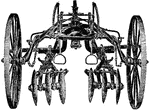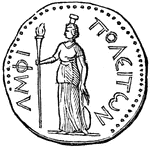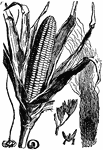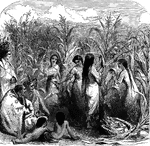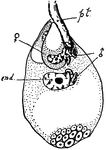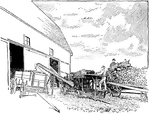Wheat
St. Peter's corn (Triticum monococcum) is a one-seeded wheat with a high portein content. This picture…

Indian Corn
Maize known as corn by most English-speakers, is a cereal grain domesticated in Mesoamerica and subsequently…
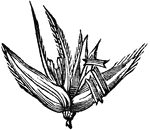
Indian Corn
Maize known as corn by most English-speakers, is a cereal grain domesticated in Mesoamerica and subsequently…
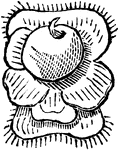
Indian Corn
Maize known as corn by most English-speakers, is a cereal grain domesticated in Mesoamerica and subsequently…

Indian Corn
Maize known as corn by most English-speakers, is a cereal grain domesticated in Mesoamerica and subsequently…
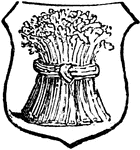
Garbe
"Argent, a garbe proper. GARBE. The heraldic term for a sheaf of any kind of corn." -Hall, 1862

Gold Brocade
The gold brocade is a type of fabric that is made with colored silks, and gold or silver threads. This…
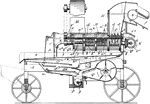
Corn Sheller
Simply insert a dried ear of corn in among the spikes and twist it. The sharp ends scrub the kernels…

Corn Husking Machine
A corn husking machine has a hollow cylindrical drum. The drum wall has at least one aperture there…

Fodder Harvesting Machine
Corn makes a greater quantity of epigeous mass than other cereal plants, so can be used for fodder.…
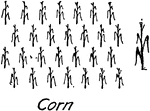
Corn Vegetation Topography Symbol
Topography conventional symbol for corn used in map drawing and drafting.

Stink Bug
Also known as Stiretrus anchorago. This bug is predatory of the larvae of the Mexican bean beetle and…
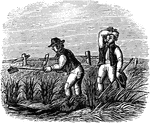
Lazy Folks Take the Most Pains
"This field of corn has been neglected long, / The weeds are rank, quite high, and rooted strong; /…
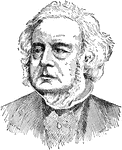
John Bright
A British statesman who helped form the Anti-Corn Law League. He also sat in the House of Commons from…
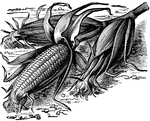
Ruby Sweet Corn
"Ruby, a new medium early variety, is likely to become a very decided favorite. The stalk, and also…

Corn Sheller
This corn sheller design allowed corn to dropped to a hopper which was then carried using the rotational…

Corn Planter
This corn planter featured an adjustable dropping device. This allowed the operator to drop the corn…
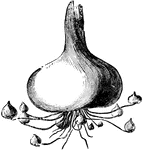
Mode of Increase of Gladiolus Corm
The common name of gladiolus is corn flag. Corms are found on the ends of the roots in the autumn.
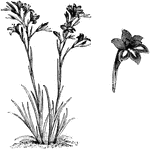
Habit and Detached Single Flower of Gladiolus Cardinalis
The common name of gladiolus is corn flag. Gladiolus cardinalis flowers are scarlet with large white…
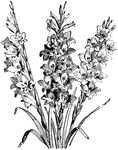
Hybrids from Gladiolus Gandavensis
Gladiolus gandavensis flowers are a rich crimson marked with yellow. The flowers bloom in the summer.…
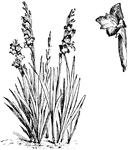
Habit and Detached Single Flower of Gladiolus Psittacinus
The corolla of gladiolus psittancinus flowers are greenish with purple streaks. The limb is a rich scarlet…

Papaver Rhoeas Flore-Pleno
Papaver rhoeas has the common names common corn poppy and redweed. The flowers are large and scarlet.…
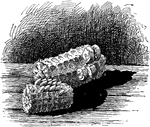
Corn on the Cob
Illustrated are kernels of corn on the cob. Behind is sweet corn. Pop corn is in the front.

Squirrel Corn Leaf
Illustrated is the leaf of squirrel corn, the common name of dicentra canadensis. The leaves are finely…

Lychnis Githago Flower
The flowers of lychnis githago are red-purple and showy. It is native to Europe.

Surface Cultivator
A surface cultivator does not cut the corn roots but throws the earth well toward the corn.
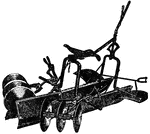
"Go Devil" Corn Cultivator
The "go devil" corn cultivator is a single row cultivator. It is used for the first and second cultivation…

Cultivators
Illustrated are the double row disc cultivator and the shovel cultivator. These are usually used for…
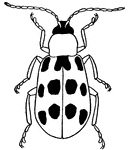
Corn Rootworm
A destructive insect of corn. Also called a cucumber beetle. Diabrotica is the name of the genus with…

Lemming
A lemming is a small, yellowish-brown rodent, closely related to the vole, and belonging to the genus…

Aradus
This medal shows that the people of Aradus venerated the sun, and were proud of the products of their…

Fortune
A female depiction of Fortune with many iconic symbols, such as the rudder, the cornucopia, and ears…
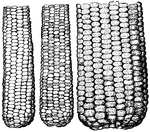
Cross Breeding Corn
Cross breeding of white pop corn (left) with yellow dent corn. The resulting hybrid is in the center.

Corn Plant
Corn plants with the surface of the soil "laying by" in accordance to the Williamson Plan.

Corn Smut
Corn smut is a plant disease caused by the pathogenic fungus Ustilago maydis that causes smut on maize…

Ruth Meets Boaz While Gleaning in the Fields
"And she went, and came and gleaned in the field after the reapers: and her hap was to light on the…

Maize Kernels Destroyed by Maggots
Illustration of two small corn (maize) kernels being eaten by maggots. One maggot is still inside one…
